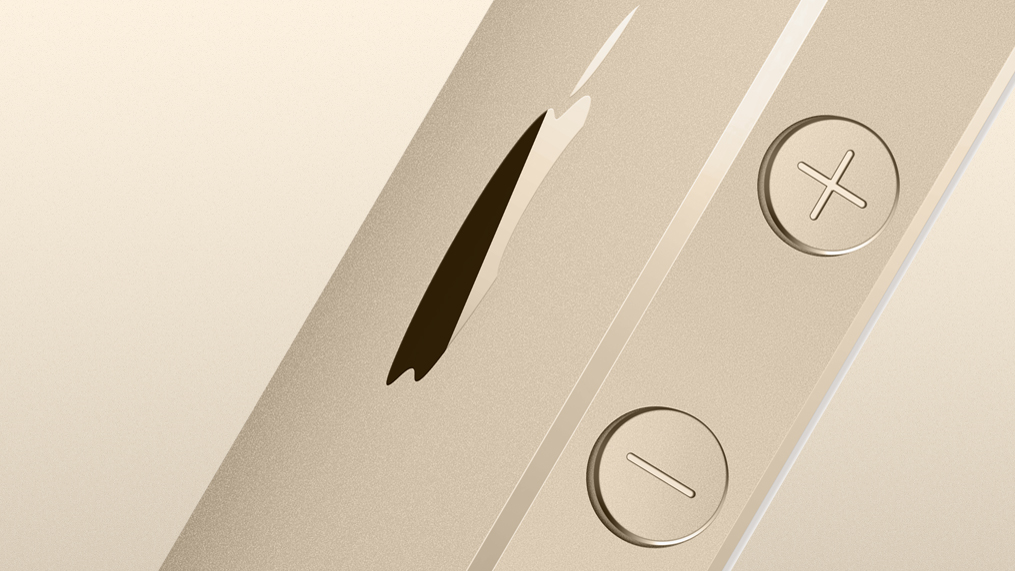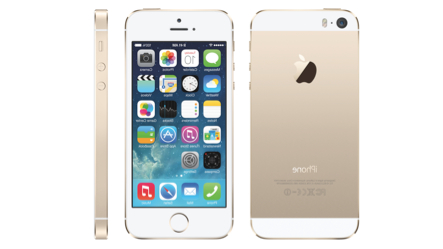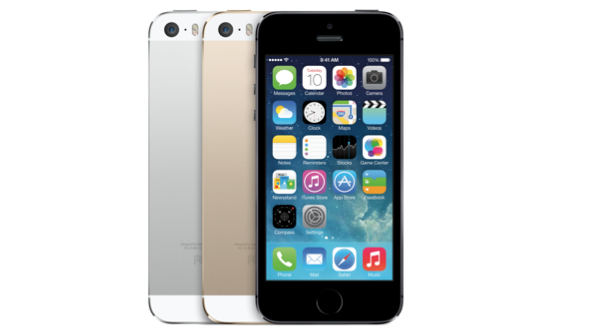Why you can trust TechRadar
Apple has imbued the new iPhone 5S with not one, but two, chips that will help it become one of the most powerful phones on the market.
It's almost insane to think of the power running under the hood here, and there's no doubt that it's given things a real performance boost – with a lot, lot more potential to come down the road.
A7 Chip
The new A7 chip from Apple is an interesting concept: not only does it bring a huge boost in power, but it's now been turbo-charged to a 64-bit CPU.
To most people that label will mean nothing more than wondering whether this means their phone is as powerful as a Nintendo 64 – in reality, it's actually a pretty important move for the company.

Simply put, a 64-bit chip allows for more powerful processing, a greater amount of power to be plugged through the phone for most tasks and will tolerate a greater amount of RAM in the future too.
The thing is, it doesn't really mean much to the consumer right now. There are some noticeable elements that take advantage, with the camera much faster and able to handle so much smoothly, and we're willing to bet the Touch ID sensor is going to need a hefty whack of power to enable such tight security on the phone.
Beyond that though you're not going to notice much in the way of an improved experience, and that's not because this phone is slow, it's because the iPhone is already a slick and fast beast. Almost since the iPhone 4 have we not seen much in the way of slowdown from Apple's handsets, and this is no different. In fact, in side by side comparisons, the iPhone 5S is actually a touch slower than the iPhone 5 for general use, thanks to iOS 7 relying more on animations to move between apps.
Sign up for breaking news, reviews, opinion, top tech deals, and more.
This doesn't mean it feels slower, it just has a really different feel to the way you navigate through the phone.
So there are two things to note when thinking about the A7 chip: one, Apple is able to talk about a chip that's one of the most powerful around, which is something its rivals have been doing for a while now with no need. But like the quad core phones of today, there's not a lot of point in a 64-bit chip right now.
That doesn't mean it's a pointless move from Apple, and this leads us to our second point: Apple is getting its iPhone range ready for the next generation of devices. Ones that will allow developers to create apps across all Apple devices, thanks to the iPhones now packing 'desktop class architecture'.
But what does it all mean for you, the consumer? Well, put simply, it's Apple taking its CPU seriously, giving the customer more power than they could ever possibly need at the moment without compromising too much on battery life.
It's pretty hard to see how that could be a negative, despite some claiming that this is nothing but a marketing exercise. It's not, it's Apple future proofing itself, allowing its phones to add in new layers of security and providing developers with the tools to make even better apps.

However, those apps will be larger and could create a greater drain on battery life should they get more intensive – however, that's for Apple and the developers to thrash out, and there's no reason to think that there won't be greater efficiencies clawed back through the improved OS integration.
In short: bigger, faster and better to give the most slick iPhone experience yet. This is Apple sticking it to the quad-core brigade.
M7
There's another cheeky little chip under the hood that sits alongside the A7 main unit: the M7 chip, which is there to make the iPhone 5S into a rival to the likes of the Nike Fuelband and the Jawbone Up.
It allows the main CPU to snooze while it tracks the motion of the phone, through the accelerometer, gyrometer and compass.
This means that it will know when you're jogging or when you're in the car, and can take that information and store it without needing to drain the battery by having the main CPU chugging away.
It can even retrofit the data to apps that you download at a later date, meaning any M7-enabled app that uses the new CoreMotion API will be able to give you information on recent training.
It will also seamlessly slip from walking to driving navigation on Apple Maps, which is a nifty extra, taking another hassle out of life, and especially useful for keeping drivers safe behind the wheel.
We're yet to see the benefit of what's on offer here with the M7 chip, but Apple is going to get more and more involved in the fitness part of the smartphone world, and this is a major play towards that.

Gareth has been part of the consumer technology world in a career spanning three decades. He started life as a staff writer on the fledgling TechRadar, and has grew with the site (primarily as phones, tablets and wearables editor) until becoming Global Editor in Chief in 2018. Gareth has written over 4,000 articles for TechRadar, has contributed expert insight to a number of other publications, chaired panels on zeitgeist technologies, presented at the Gadget Show Live as well as representing the brand on TV and radio for multiple channels including Sky, BBC, ITV and Al-Jazeera. Passionate about fitness, he can bore anyone rigid about stress management, sleep tracking, heart rate variance as well as bemoaning something about the latest iPhone, Galaxy or OLED TV.
